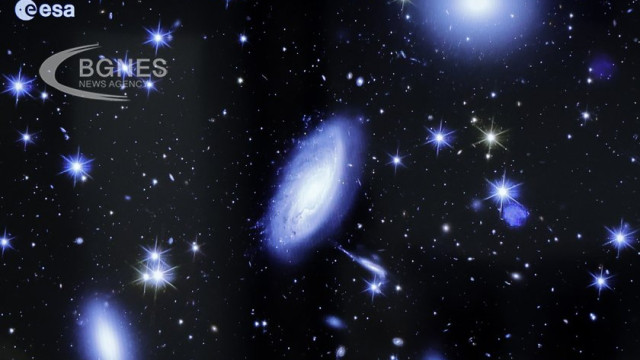The visibility of the Euclid space telescope has been restored after a delicate operation that successfully melted a thin layer of ice that had been obscuring its view, the European Space Agency (ESA) said, AFP reported.
There had been concerns that the "creeping" ice could delay the mission of the European Space Telescope, which blasted off in July on the world's first mission to explore the cosmic mysteries of dark matter and dark energy.
However, the procedure to thaw the ice to gently warm the telescope's optimum mirror "has worked significantly better than expected", ESA said.
"After the very first mirror was warmed by only 34 °C, Euclid's vision was restored," it added.
In November, scientists on the ground noticed they were losing some light entering the telescope's visible light chamber.
They determined that the problem was a layer of ice - believed to be the width of a strand of DNA - that was accumulating on the telescope's optical surfaces.
There are heaters on board that can warm the entire spacecraft, a process that was carried out shortly after Euclid's launch.
But heat expands many materials, and heating the entire spacecraft now would require careful recalibration.
That could delay the telescope's mission by months, Ralf Kohli, the scientist in charge of working with Euclid's instruments, said last week.
So the team opted to heat individual mirrors in hopes of fixing the problem without having to heat the entire spacecraft.
Kohli said they will go through several different mirrors until they find the right one.
But ESA stressed that they solved the problem by heating the "first" mirror they tried.
Water protection is a common problem for all spacecraft.
Despite the best efforts on the ground, a small amount of water ingested during assembly of the spacecraft on Earth can slip into space.
Faced with the cold vastness of space, water molecules freeze on the first possible surface - in this case, the Euclid mirrors.
Ice is not Euclid's first failure.
Previously, the ground team fixed a software problem where cosmic rays confused the spacecraft's guidance sensor.
Some unwanted solar rays were also interfering with the telescope's observations, a problem solved by slightly rotating the spacecraft, Kohli said.
"Euclid sits not far from its other telescope, James Webb, in a stable location hovering about 1.5 million kilometers from Earth.
Unlike Webb's impressive long-range view, Euclid takes a far broader view of the cosmos.
It will use this vision to map a third of the sky - encompassing a mind-boggling two billion galaxies - and create what has been billed as the most accurate 3D map of the universe yet.
Scientists hope it will help shed more light on dark matter and dark energy, which are thought to make up 95% of the universe but remain shrouded in mystery. / BGNES







